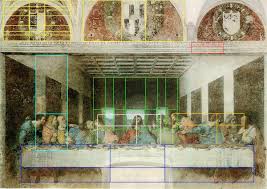How the Golden Section and Golden Mean Help in Composition
This blog will explain the Golden Mean, Golden Ratio and Golden Section. These terms all refer to the same phenomenon. They reflect a regularly occurring proportional ratio in nature that can be included in your art to achieve effective composition.
The Golden Section is a mathematical ratio commonly found in nature, which is the ratio of 1 to 1.618. Fibonacci, an Italian mathematician, discovered a relationship of numbers that create a pleasing design. Without getting technical, using his formula, successive numbers added together create a ratio that is very close to the Golden Ratio of 1.618. These ratios are beautiful and aesthetically pleasing and were used by Leonardo da Vinci and many of the Renaissance artists to compose their work.
The Golden Rectangle is the most visually satisfying of all geometric forms and it adheres to the Golden Mean as well This principle can be observed in music, art, and design. The Renaissance artists used these proportions in their paintings to achieve balance and beauty. A good example is Leonardo da Vinci’s painting, The Last Supper, shown below.
David will talk about his days in advertising where there was much reference to these principles and why he has his doubts about its importance in making a great work of art.

Leonardo da Vinci’s “Vitruvian Man” is believed to illustrate the Golden Ratio.



The Golden Mean is present in the placement of the Mona Lisa.



To learn more, watch this Free Video!




Leave a Reply
You must be logged in to post a comment.